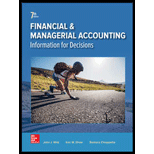
It means record of financial data related to business transactions in a journal in a manner so that debit equals credit. It provides an audit trail to the auditor and a means to analyze the effects of transactions to an organization’s financial health.
Rules of Journal Entry:
The rules for journal entry are defined by 5 accounting components,
- Assets: Increase in asset should be debit and decrease should be credit.
- Liabilities: Increase in liabilities should be credit and decrease should be debit.
- Equity: Increase in Equity should be credit and decrease should be debit.
- Expense: Increase in expense should be debit and decrease should be credit.
- Revenue: Increase in revenue should be credit and decrease should be debit.
Credit Card:
It refers to the card made of plastic and issued by a bank. It provides an individual to buy goods and services on credit when they have shortage of cash.
Perpetual Inventory System:
It refers to the system of recording transaction related to inventories at the time of their occurrence. Each sale and purchase is recorded at the time they occurred.
To prepare: Journal entries for the given credit card sales transactions.
Want to see the full answer?
Check out a sample textbook solution
Chapter 7 Solutions
GEN COMBO LOOSELEAF FINANCIAL AND MANAGERIAL ACCOUNTING; CONNECT ACCESS CARD
- Please see an attachment for details the general accounting question and step by step explanation do fastarrow_forwardWhat would be the value of ending inventory?arrow_forwardA company produces a single product, with a selling price of $12 and a variable cost of $7. Fixed costs are $120,000 per period. What volume of sales in units is needed to earn a profit of $80,000 per period?arrow_forward
- Lucid Echo Studios has forecasted sales of $24,000,000 for next year and expects its cost of goods sold (COGS) to remain at 75% of sales. Currently, the firm holds $2,700,000 in inventories, $1,800,000 in accounts receivable, and $2,200,000 in accounts payable. What is the length of Lucid Echo Studios' cash conversion cycle (CCC)? a. 40.94 days b. 31.58 days c. 37.53 days d. 43.75 daysarrow_forwardFinancial accounting 25.4.45arrow_forwardFinancial accounting MCQ 1arrow_forward

 AccountingAccountingISBN:9781337272094Author:WARREN, Carl S., Reeve, James M., Duchac, Jonathan E.Publisher:Cengage Learning,
AccountingAccountingISBN:9781337272094Author:WARREN, Carl S., Reeve, James M., Duchac, Jonathan E.Publisher:Cengage Learning, Accounting Information SystemsAccountingISBN:9781337619202Author:Hall, James A.Publisher:Cengage Learning,
Accounting Information SystemsAccountingISBN:9781337619202Author:Hall, James A.Publisher:Cengage Learning, Horngren's Cost Accounting: A Managerial Emphasis...AccountingISBN:9780134475585Author:Srikant M. Datar, Madhav V. RajanPublisher:PEARSON
Horngren's Cost Accounting: A Managerial Emphasis...AccountingISBN:9780134475585Author:Srikant M. Datar, Madhav V. RajanPublisher:PEARSON Intermediate AccountingAccountingISBN:9781259722660Author:J. David Spiceland, Mark W. Nelson, Wayne M ThomasPublisher:McGraw-Hill Education
Intermediate AccountingAccountingISBN:9781259722660Author:J. David Spiceland, Mark W. Nelson, Wayne M ThomasPublisher:McGraw-Hill Education Financial and Managerial AccountingAccountingISBN:9781259726705Author:John J Wild, Ken W. Shaw, Barbara Chiappetta Fundamental Accounting PrinciplesPublisher:McGraw-Hill Education
Financial and Managerial AccountingAccountingISBN:9781259726705Author:John J Wild, Ken W. Shaw, Barbara Chiappetta Fundamental Accounting PrinciplesPublisher:McGraw-Hill Education





